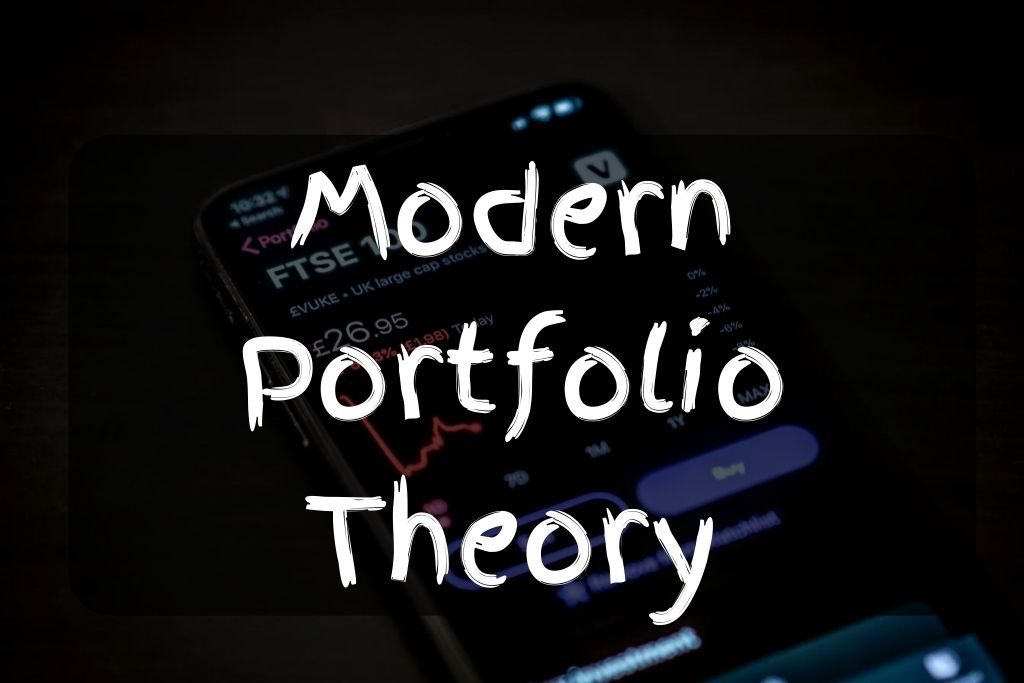What is Modern Portfolio Theory and Portfolio Risk?

Definition of Modern Portfolio Theory
- A theory presented in 1952 by Harry Markowitz on how risk-averse investors can create portfolios to maximize the return on investments based on the optimal levels of risk.
- It can also be used to create a portfolio to minimize the level of risk based on the specified amount of expected return.
- It optimizes mean-variance (In MPT mean=return, variance=risk), which describes the impact that capital allocations on assets have on the expected risks and returns of the portfolio.
- The modern portfolio theory assumes that investors are rational, and therefore risk-averse, meaning that they prefer owning a less risky portfolio.
- The portfolio risk is less volatile than the risks of individual assets that make up the portfolio.
Want to learn more financial ratios?
Get the eBook explaining some of the most useful ratios for free now.
What Impacts Modern Portfolio Theory?
- Investors can construct more efficient portfolios, which exists on the efficient frontier, also known as the portfolio frontier.
- The efficient frontier is a curve that connects the most efficient portfolios, made up of different combinations of assets.
- All portfolios above the curve are favorable for investors as they maximize the returns at the specified level of risk.
- The Modern Portfolio Theory aims to find the most valuable correlation between the expected returns and risks of investments.
- The correlation coefficient measures whether asset prices change in the same direction as changes that occur in macroeconomic factors and to what extent.
- The correlation of an asset is measured through a scale of negative 1 to positive 1.
- If two assets have a correlation of 1.0, they are perfectly correlated which means both will change in the same way and amount.
- If two assets have a correlation of –1.0, they are perfectly negatively correlated, which means one’s gain is another one’s loss.
- If two assets have zero correlation, they have no measurable relationship.
- In practice, it would be ideal for assets with almost zero correlation as that generally limits additional risks.
How to Calculate Modern Portfolio Theory?
- Under the modern portfolio theory, we calculate the expected return of the portfolio by multiplying the expected returns of individual assets with the investment proportion of each asset.
The expected return of portfolio = (Weight of Asset A*Expected Return on Asset A) + (Weight of Asset B*Expected Return on Asset B)
- The portfolio return variance is calculated by multiplying the squared weight of each asset by its variance and adding two times the weight of each asset multiplied by the covariance of the asset pair.
The variance of portfolio = (Weight of Asset A)2 * (Variance of Asset A) + (Weight of Asset B)2 * (Variance of Asset B) + 2(Weight of Asset A)(Weight of Asset B)(Covariance of Asset A and Asset B)
- The portfolio standard deviation is the square root of the portfolio variance
Standard deviation of portfolio = sqrt(variance of portfolio)
- Beta is the risk statistic used to compare the portfolio’s exposure to systematic risk to that of the market.
- The beta of the portfolio is calculated by multiplying the beta of each asset to its weight in the portfolio.
(Beta of Asset A * Weight of Asset A) + (Beta of Asset B * Weight of Asset B)
- A portfolio with a beta of one is equally exposed to systematic risk as the market.
- A high beta indicates more risk, while a low beta indicates less risk.
- By adjusting the investment proportion of each asset in the portfolio, investors can achieve the desired beta, giving them their desired returns.
Why is Modern Portfolio Theory Important?
- The theory serves as an advancement in financial modeling and an important decision tool
- The Modern Portfolio Theory encompasses the idea of not putting all your eggs in one basket. In this sense, we do not invest entirely in one asset and rely on that
- With a portfolio of uncorrelated assets, portfolio returns can increase, and risk can be lowered.
Modern Portfolio Theory in Practice
- For example, an investor has a portfolio with three assets, investing $300,000 in Asset A and $700,000 in Asset B. The investor’s portfolio is worth $1 million in total.
- The expected return on Asset A is 5% and Asset B is 8%.
- To calculate the portfolio’s expected return, take [($300,000/$1million) * 5%] + [($700,000/$1million) * 8%]
- The portfolio’s total expected return equals to 1.5% + 5.6% = 7.1%
- If the investor wants to increase the return on investment, the allocation of capital to the assets can be adjusted.
- Asset A has a variance of 30% while Asset B has a variance of 20%. The two assets have a correlation of 1.75.
- The covariance of the assets is sqrt(0.3)*sqrt(0.2) which equals 0.25
- The portfolio’s variance is calculated as [(0.3)2 * (0.3)] + [(0.7)2 * (0.2)] + [2 * 0.3 * 0.7 * 0.25] = 0.23.
- Asset A has a beta of 1 and Asset B has a beta of 1.5
- To calculate the portfolio’s beta, take [1 * $300,000/$1million] + [1.5 * $700,000/$1million].
- The portfolio’s beta equals 0.3 + 1.05 = 1.35, which indicates that it is more volatile than the market itself.
Learn some of the most useful financial ratios!
Don’t miss this free eBook.
